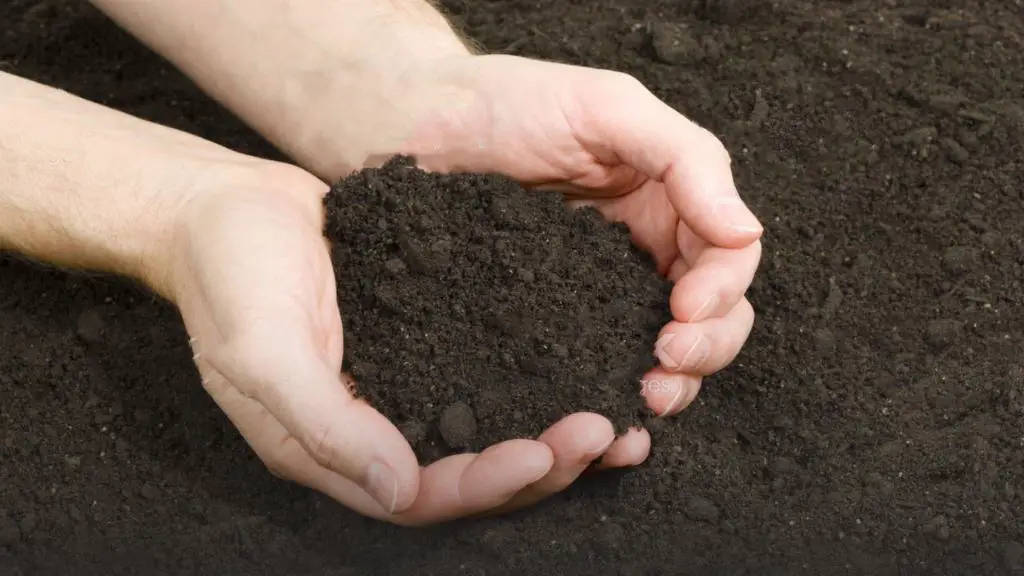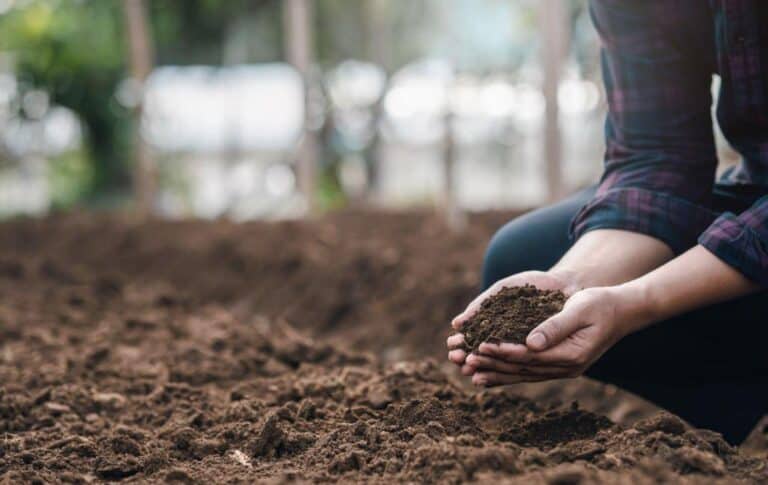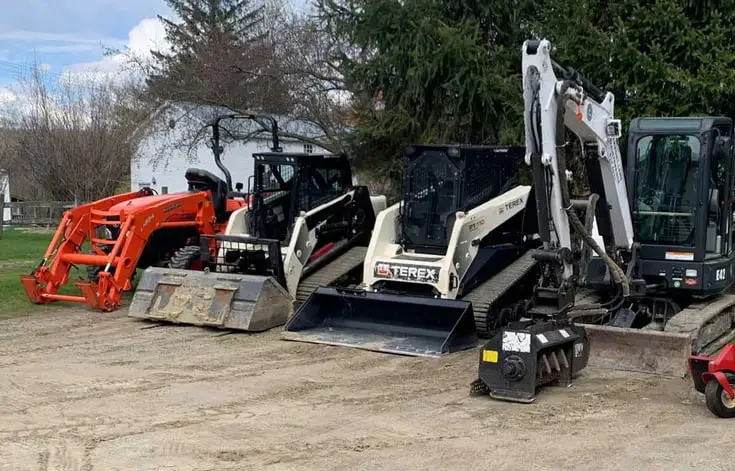The Science Behind Black Cotton Soil: Is It Organic or Inorganic?

Black cotton soil, with its unique properties and widespread occurrence, has long been a subject of curiosity among those interested in soil science, agriculture, and engineering.
In the enchanting world of soil types, where the Earth’s hidden stories lie beneath our feet, one intriguing character takes the stage: the enigmatic Black Cotton Soil. A puzzling paradox, it teases us with its name—cotton conjures visions of all things organic and natural, while ‘black’ suggests a darkness that might hint at inorganic origins.
Unveiling its mysteries requires more than just a mere gaze; it demands a tactile exploration of its texture, a chemical revelation of its elements, and a historical narrative of its evolution.
In this article, we delve into the intriguing nature of black cotton soil, exploring its composition, formation, agricultural importance, and engineering challenges.
Introduction to Black Cotton Soil
Black cotton soil, often known as “regur soil” or “black soil,” is a distinctive type of earth recognized for its elevated clay content and deep, dark hue. Its moniker, “black cotton,” derives from its rich coloration and its likeness to cotton fabric in terms of its tendency to contract and expand. While this soil is crumbly when dry, it transforms into a sticky, moldable substance when wet.
Black cotton soil predominates in areas with semi-arid to arid climates, spanning regions like India, the United States, Australia, and sections of Africa. Its remarkable prevalence in these regions has far-reaching consequences for diverse activities, particularly in agriculture and construction.
This soil type’s ability to retain water is both a boon and a bane. On the one hand, it provides crucial moisture during dry spells, aiding crop growth. On the other hand, its propensity to swell when wet can lead to cracks and fissures as it dries, posing challenges for construction projects.
| Advantages | Challenges |
| High water retention for crops | Swelling and cracking during drying |
| Nutrient-rich composition | Difficulties in construction |
| Support for certain vegetation | Challenges in water drainage |
Composition and Properties of Black Cotton Soil

Black cotton soil is primarily composed of fine-grained minerals, with a significant portion being clay particles. However, it also contains organic matter, which contributes to its fertility and water-holding capacity. This unique blend of mineral and organic components sets it apart from other soil types.
The high clay content in black cotton soil gives it its characteristic properties. Clay particles have a strong affinity for water, causing the soil to swell when wet and shrink when dry. This behavior has implications for both agriculture and construction.
Due to its high clay content, black cotton soil has excellent water retention capabilities. However, this can also lead to poor drainage, potentially causing water logging issues during heavy rainfall. The balance between water retention and drainage is crucial for successful agricultural practices.
Is Black Cotton Soil Organic or Inorganic?
Soil classification is based on its composition and properties. Organic soils are those rich in decomposed plant and animal matter, while inorganic soils primarily consist of minerals. The classification plays a vital role in understanding soil behavior and agricultural practices.
Black cotton soil, with its distinctive dark hue, contains both organic and inorganic components. The presence of clay minerals and organic matter in varying proportions makes it a complex entity, challenging its clear categorization.
Black cotton soil is an inorganic soil type. It is a clay-rich soil that contains calcium, carbonate, potash, lime, iron, and magnesium. The soil is black in color due to the presence of titaniferous magnetite. Black cotton soil is mainly found in the tropical and subtropical regions of the world.
While black cotton soil is rich in nutrients, it has a low content of phosphorus, nitrogen, and organic matter. This means that it is more fertile in low-lying areas than in upland areas. A study of black cotton soil from Indore, India, found that it contained only 0.45% organic matter.
Therefore, based on the above exposition, black cotton soil is an inorganic soil type.
Read: Pros and Cons of Black Cotton Soil: A Comprehensive Guide
Formation Process of Black Cotton Soil
Climate, parent material, and vegetation are a few factors that affect the formation of black cotton soil. The interplay of these elements contributes to the unique composition and characteristics of this soil type. Semi-arid regions with alternating wet and dry periods are conducive to its formation.
One of the most intriguing aspects of black cotton soil is its swelling and shrinking behavior in response to moisture changes. During the rainy season, the soil absorbs water and swells, which can exert significant pressure on structures built on it. Conversely, in dry conditions, it contracts, leading to cracks and crevices.
Can Black Cotton Soil Be Used for Gardening?
The usability of black cotton soil for gardening raises intriguing questions, given its distinctive traits. This soil variety, renowned for its swelling and shrinking tendencies, presents both obstacles and opportunities for successful cultivation endeavors. Let’s delve into the complexities of using black cotton soil in gardening.
Challenges and Solutions
- Swelling and Shrinking Behavior: Black cotton soil’s propensity to swell when wet and shrink upon drying can pose challenges for plant roots, potentially affecting their stability and access to nutrients.
- Poor Drainage: Excessive water retention due to the clay-rich composition of black cotton soil can hinder proper drainage, leading to waterlogged conditions harmful to plant health.
Managing Black Cotton Soil for Gardening
While the challenges might seem daunting, effective management strategies can transform black cotton soil into a viable medium for gardening:
| Techniques | Benefits |
| Amending Soil Structure: Incorporating organic matter like compost can improve soil structure, enhancing drainage and aeration. | Enhanced root growth |
| Mulching: Applying a layer of mulch on the soil surface can regulate moisture levels and temperature, reducing the extent of swelling and shrinking. | Weed suppression |
| Raised Beds: Creating raised beds filled with a well-balanced soil mix can provide better control over soil conditions and drainage. | Customized soil composition |
Crops that are Suitable for Growing in Black Cotton Soil
The intriguing attributes of black cotton soil pave the way for specific crops that thrive in its nurturing embrace. This soil’s distinctive qualities have led farmers in relevant regions to curate their agricultural choices for optimal results.
Crop Selection and Adaptation
- Cotton: True to its moniker, black cotton soil serves as an ideal haven for the growth of cotton crops. The soil’s name finds its origin in this very compatibility, and its texture provides the perfect medium for cotton plants to flourish.
- Soybeans: This leguminous delight finds a favorable environment in black cotton soil, capitalizing on the soil’s nutrient-rich composition. Soybean plants benefit from the ample nutrients present in the soil, fostering healthy growth.
- Pigeon Peas: These versatile legumes have established themselves as a promising crop choice for black cotton soil regions. Their resilience and ability to endure challenging soil conditions contribute to their success.
- Millet Varieties: Certain types of millet, such as pearl millet and finger millet, exhibit a remarkable compatibility with black cotton soil. These drought-resistant grains find the soil’s water retention capabilities advantageous during periods of water scarcity.
| Crop | Suitability |
| Cotton | Ideal for optimal growth |
| Soybeans | Flourishes due to nutrient richness |
| Pigeon Peas | Resilient in challenging conditions |
| Millet Varieties | Thrives, aided by water retention |
Conclusion
In conclusion, the classification debate surrounding black cotton soil underscores its complexity and unique characteristics. Its potential as a fertile agricultural resource is closely linked to its organic matter content and nutrient retention capabilities.
However, the environmental challenges it presents call for conscientious conservation efforts. As we continue to unravel the mysteries of black cotton soil, striking a balance between its agricultural value and ecological significance remains a paramount concern.
Black cotton soil presents both challenges and benefits for agriculture. While its water retention capacity can be advantageous during droughts, its swelling-shrinking behavior can damage crops and disrupt root systems. The presence of nutrients and organic matter, however, contributes to its fertility.
Certain crops are well-suited for cultivation in black cotton soil. These include cotton (hence the name), soybeans, pigeon peas, and some varieties of millet. Farmers in black cotton soil regions have adapted their agricultural practices to make the most of its unique characteristics.
To maximize agricultural productivity in black cotton soil, farmers employ various management practices. Implementing proper irrigation techniques, incorporating organic matter, and adopting suitable crop rotation strategies can help mitigate the challenges posed by this soil type.
FAQs on Black Cotton Soil: Is It Organic or Inorganic?
Can black cotton soil be used for gardening?
Black cotton soil can be challenging for gardening due to its swelling and shrinking behavior, but with proper management techniques, it can be used for cultivation.
Is black cotton soil suitable for building houses?
Building on black cotton soil requires careful engineering and foundation design to address its swelling-shrinking properties and ensure stability.
What is the impact of rainfall on black cotton soil?
Rainfall can cause black cotton soil to swell and become waterlogged, potentially affecting crops and construction projects.
Can black cotton soil be improved for agriculture?
Yes, by incorporating organic matter, using proper irrigation methods, and practicing suitable crop rotation, the fertility and structure of black cotton soil can be enhanced.
Are there regions where black cotton soil is more prevalent?
Black cotton soil is commonly found in semi-arid to arid regions, with notable occurrences in India, the United States, Australia, and parts of Africa.
Is black cotton soil the same as clay soil?
While black cotton soil has a high clay content, it’s not the same as clay soil due to its unique properties.
Is black cotton soil always black in color?
No, the color can vary from deep black to grayish-black depending on its composition and moisture content.





